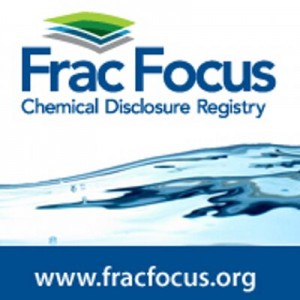What Makes Public Disclosure Effective?
From an Article by Miron Avidan, Dror Etzion and Joel Gehman, Huffington Post, July 1, 2016
Hydraulic fracturing (“fracking”) is a technology employed in the production of oil and gas from unconventional shale formations. Over the last decade, tens of thousands of fracking wells have been drilled worldwide. Fracking often takes place in relatively populated areas, thus posing an array of risks to public health such as water contamination and induced seismicity. In addition to inspecting and monitoring these risks, regulators now face the challenge of keeping the public well informed about their extent.
In order to shed light on how to address this challenge, we recently published a report on “The Effectiveness of Fracking Disclosure Regimes in Canada.” Our research was funded by the Social Sciences and Humanities Research Council of Canada as part of its Imagining Canada’s Future Initiative. We evaluated information disclosure regulations in the four provinces where fracking currently takes place: Alberta, British Columbia, Manitoba and Saskatchewan. As a point of comparison, the provinces of New Brunswick, Newfoundland and Labrador, Nova Scotia and Quebec have various regulatory prohibitions on fracking. Overall, we found that while oil and gas companies are required to disclose a variety of information to provincial regulators, there are almost no regulations requiring this information to be disclosed to the public. In fact, we found only two regulations requiring a regulator to disclose information of any kind to the public, both in British Columbia.
Based on a conceptual model that we developed in order to assess the effectiveness of public disclosure, we concluded our report by recommending that regulators be more proactive in disclosing data they are already collecting. This would entail very little additional effort or cost, and could dramatically increase transparency. We also suggested that regulators adopt a more precautionary stance, and report on a wider array of environmental and health indicators, even if certainty about the effects of fracking on these indicators requires further scientific study.
Looking beyond fracking specifically, we believe that our model for assessing public disclosure effectiveness may be easily applicable to other contexts (1). The model is comprised of four main criteria, which are exemplified next by comparing the information provided by the main fracking disclosure websites (FracFocus.org in the United States and FracFocus.ca in Canada) to the information provided by the World Air Quality Index project (WAQI).
The first criterion is “Accessibility”: How easy is it for the end-user to access the information? WAQI users can view data for a location by clicking on a visual representation of the world map. By contrast, FracFocus asks its users for specific geographic information to access desired local data.
Comprehensibility: How understandable are the data to the average user? WAQI data are provided in terms of simple one-word adjectives (e.g., “Unhealthy,” “Moderate,” “Good”) accompanied by an intuitively matching color-scheme (e.g., red, yellow and green, respectively). Fracking data are provided in professional jargon from which it is hard to derive implications related to public health (e.g., contains 2-Amino-2-methyl-1-propanol 0.00019% concentration by mass).
Granularity: At what spatial and temporal resolutions are the data provided? The WAQI index enables city- and neighborhood-based granularity, which is highly useful for the public. In contrast, the fracking data are provided per drilling well, thereby requiring users to compile information from multiple sources. A family might have 10 wells in their backyard and 100 more in their town, but FracFocus provides no way to aggregate these impacts, let alone understand their consequences.
Timeliness: How quickly are data provided? WAQI information reflects real-time measurements, whereas fracking information is based on the last periodical report provided by the operator. By design, it does not provide data on timely critical events such as water contamination, fracking-induced seismicity and so forth.
We believe our model is potentially applicable to other settings where information is transmitted to the public, whether in environmental contexts (such as public disclosure of factory toxic releases in the United States), commercial contexts (such as financial planning information provided to banking customers), or on a day-to-day basis (such as information regarding urban traffic).
Assessing current disclosure practices in each of these contexts using our framework may reveal useful insights both for information providers and their audiences. In addition, the model presented here may be further developed using a behavioral perspective, which examines how people make decisions when confronted with information formatted in different ways.
(1) Our model extends previous work by Weil, Fung, Graham and Fagotto (2006).
About the authors
Miron Avidan is a doctoral student at McGill University. Dror Etzion is associate professor of strategy at McGill University’s Desautels Faculty of Management. Joel Gehman is assistant professor of strategic management and organization in the Alberta School of Business at the University of Alberta.
See also: www.FrackCheckWV.net

